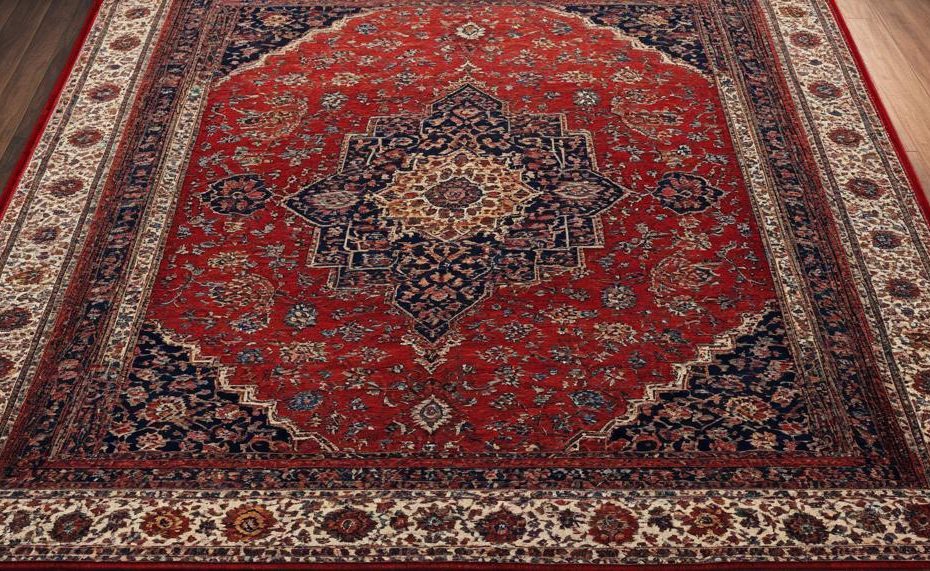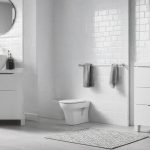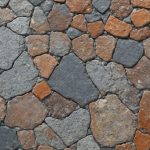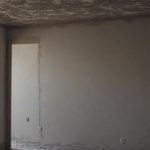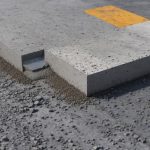Selling oriental rugs can be a rewarding endeavor, offering a chance to profit from these exquisite and valuable pieces. Are you wondering how to go about it? Yes, you can effectively sell your oriental rugs by following a few strategic steps, ensuring a smooth and profitable transaction.
Oriental rugs are cherished for their intricate designs and cultural significance, making them highly sought after in the market.
Whether you inherited a beautiful rug or are looking to downsize, understanding the best practices for selling can make a significant difference.
Here’s what you need to know to get started:
- Understand Market Value: Research the current market value of your rug to set a competitive price.
- High-Quality Images: Take clear, high-resolution photos that highlight the rug’s design and condition.
- Online Platforms: Utilize sites like Facebook Marketplace and Kijiji to reach a broad audience.
- Local Stores: Contact nearby rug stores that might be interested in purchasing your well-maintained rugs.
- Compare Offers: Gather and compare offers from different buyers to find the best deal.
- Negotiation: Be prepared to negotiate to achieve the best possible price.
- Multiple Listings: Spread the word by listing your rug on several platforms to increase visibility.
- Offline Options: Don’t forget traditional methods like local stores and word-of-mouth.
By following these tips, you’ll be well on your way to successfully selling your oriental rugs. Keep reading to dive into each of these points in detail, ensuring you make the most of your rug-selling journey.
Contents
How to Sell Your Old Rug?
Selling an old oriental rug requires a bit of strategy and knowing where to showcase its value. Here are some effective methods to ensure you get the best deal:
Online Platforms
Utilizing online marketplaces is a great way to reach a broad audience. Websites like Craigslist, eBay, and Facebook Marketplace allow you to list your rug with detailed descriptions and high-quality photos.
| Platform | Benefits | Tips |
| Craigslist | Local buyers, no shipping needed | Provide detailed descriptions and clear photos |
| eBay | Global audience, auction options | Consider auction format for rare rugs |
| Facebook Marketplace | Easy communication, local sales | Join local selling groups for more visibility |
Local Rug Stores
Approach local rug stores to see if they are interested in purchasing your rug or selling it on consignment. Consignment means they will display your rug in their store and take a commission once it sells.
| Step | Details | Notes |
| Contact Stores | Call or visit local rug stores | Verify the store’s reputation |
| Consignment Agreement | Negotiate the terms and commission | Get everything in writing |
| Follow Up | Check on the sale progress | Be patient but proactive |
Social Media and Word of Mouth
Spread the word among friends, family, and social media followers. Personal networks can sometimes yield quick sales.
| Method | Details | Example |
| Social Media Posts | Share photos and details on platforms like Instagram and Twitter | Use hashtags like #OrientalRugForSale |
| Word of Mouth | Tell friends and family about the sale | Personal recommendations can be powerful |
| Local Groups | Post in community groups on platforms like Nextdoor | Highlight the rug’s unique features |
High-Quality Photos and Descriptions
High-resolution images and detailed descriptions can significantly impact your rug’s appeal. Highlight its age, origin, material, and any unique patterns or features.
| Aspect | Details | Tips |
| Photos | Take multiple angles, close-ups of patterns, and any labels | Use natural light for best results |
| Descriptions | Include dimensions, material, age, and condition | Be honest about any wear or damage |
| Story | Share any interesting history or provenance | Engages potential buyers emotionally |
Restoration of the Rug before you sell it
When restoring an oriental rug before selling it, several key factors need consideration to ensure you maximise its value and appeal to potential buyers. Below are essential aspects to focus on:
Assessing Condition and Age
- Condition: Inspect the rug for any damage, wear, or stains. Pay attention to the pile, edges, and fringe. Older rugs might have more wear, but they can also be more valuable if they are rare or antique.
- Age: Determine the age of the rug. Antique rugs (over 100 years old) often have higher value, while semi-antique (50-100 years old) and newer rugs have varied market values depending on condition and craftsmanship.
Market Demand and Trends
- Current Trends: Stay informed about the latest trends in the rug market. Certain styles, colours, or origins might be more in demand, affecting the rug’s desirability.
- Collector Preferences: Understand what collectors are looking for, which can influence how you present and price the rug.
Cleaning and Restoration
- Professional Cleaning: Invest in professional cleaning to remove dirt and stains, which can significantly enhance the rug’s appearance.
- Repairs: Consider minor repairs such as re-knotting, fringe repair, or fixing worn edges. Consulting a professional rug repair specialist can be beneficial to avoid damaging the rug.
Selling Platform
- Online Marketplaces: Platforms like eBay, Etsy, or specialized rug websites can reach a wide audience. Research which platform suits your rug’s style and price range.
- Auction Houses: For high-value or rare rugs, auction houses might attract serious buyers willing to pay premium prices.
High-Quality Photos
- Photography: Capture high-quality images in natural light, highlighting the rug’s colours, patterns, and any unique features. Include close-ups of any repairs or damage.
- Visual Appeal: Use photos to tell the rug’s story, showcasing its beauty and craftsmanship.
Compelling Description
- Detailed Description: Provide an accurate and engaging description, including size, origin, design, condition, and any historical or cultural significance. Be honest about any imperfections.
- Keywords: Use relevant keywords to improve searchability online.
Competitive Pricing
- Research: Look up recent sales of similar rugs to set a competitive price. Consider the rug’s age, condition, rarity, and market demand.
- Flexibility: Be prepared to negotiate with potential buyers, but know your minimum acceptable price.
Detailed Information and Negotiation
- Transparency: Be ready to provide detailed information about the rug’s history, care instructions, and provenance.
- Negotiation Skills: Develop strong negotiation skills to interact confidently with potential buyers.
Packaging and Shipping
- Proper Packaging: Ensure the rug is well-packaged to protect it during transit. Use sturdy materials and consider insuring the shipment.
- Shipping Options: Choose reliable shipping services to ensure safe and timely delivery to the buyer.
Get Your Rug Professionally cleaned
Professional rug cleaning offers numerous advantages, ensuring your rugs remain in top-notch condition, extend their lifespan, and contribute to a healthier living environment. Here are the key benefits:
Specialized Equipment and Solutions
Professional cleaners use advanced tools and gentle yet effective cleaning solutions tailored for rugs. This ensures thorough cleaning without damaging delicate fibres.
Removal of Deep-Seated Particles
Dust, dirt, and abrasive particles often settle deep within the rug. Professional cleaning eliminates these, preventing wear and tear, thereby extending the rug’s lifespan.
Warranty Maintenance
Many rug manufacturers require professional cleaning to maintain the warranty. Regular professional care ensures your warranty remains valid.
Cost-Effective
While professional cleaning might seem pricey, it is economical in the long run. Regular maintenance delays the need for costly replacements.
Improved Indoor Air Quality
Rugs trap pollutants such as pet dander, lead, and dust. Professional cleaning removes these contaminants, significantly enhancing indoor air quality. This is particularly beneficial for children, the elderly, and those with respiratory issues.
Essential in Humid Climates
In humid areas like Singapore, regular professional cleaning prevents mold and mildew growth, maintaining a safe and inviting living environment.
Expert Care and Peace of Mind
Knowing that skilled professionals are taking care of your rug provides peace of mind. Their expertise ensures your rug is cleaned with the utmost care, preserving its beauty and functionality.
Take Pictures of Your Rug
To capture high-quality images of your oriental rug, enhancing its appeal for potential buyers, follow these detailed steps:
| Step | Description | Example |
| Prepare the Rug | Ensure the rug is clean and wrinkle-free | Professional cleaning, laying flat |
| Set the Scene | Use a neutral background and natural light | Near a window or outdoor |
| Camera Settings | High-resolution camera, tripod, proper exposure | DSLR or high-quality smartphone camera |
| Capture Shots | Full-view, close-up, and angle shots | Top-down for full view, close-ups of patterns |
| Edit and Enhance | Adjust brightness, contrast, sharpness | Photo editing software |
| Highlight Features | Show unique details and condition | Close-ups of wear and craftsmanship |
| Presentation | Provide multiple images and captions | Size, age, origin details |
Following these steps will help you create visually appealing listings that can significantly increase the chances of selling your oriental rug.
Point Out the Damaged Areas and Other Rug Details
To accurately identify and highlight damaged areas and other important details when selling an oriental rug, follow these steps:
Thorough Inspection
- Inspect Both Sides: Examine the front and back of the rug to spot any inconsistencies.
- Check Edges and Fringes: Look for unraveling, fraying, or worn-out fringes.
- Identify Patterns and Designs: Pay attention to any disruptions in the design that may indicate damage.
- Note Discoloration: Observe any fading or discoloration that might have occurred over time.
Types of Damage
- Wear and Tear: Identify areas with worn-down fibres, especially in high-traffic zones like doorways.
- Stains: Look for any spots caused by spills or accidents.
- Holes and Tears: Check for physical damage such as holes, rips, or tears.
- Moth Damage: Look for small holes or missing patches of wool, a sign of moth infestation.
- Water Damage: Identify any water stains or mildew smells.
Documentation
- Clear Photos: Take detailed photos of each part of the rug, including close-ups of any damaged areas.
- Accurate Descriptions: Write comprehensive descriptions detailing the size, material, origin, and any damage or repairs.
Professional Consultation
- Rug Appraiser: Consider hiring a professional rug appraiser to identify and document damages.
- Cleaner: Professional cleaners can also offer insights into the condition of the rug.
Transparency and Presentation
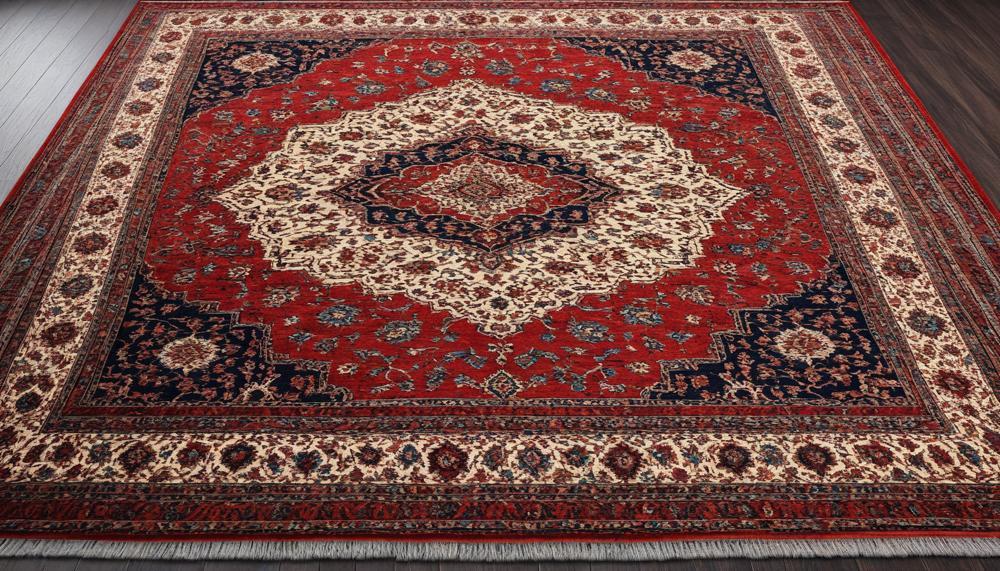
- Honesty About Repairs: Clearly state any repairs or restorations done.
- Proper Cleaning and Maintenance: Ensure the rug is clean and well-maintained before showing it to potential buyers.
- Display in Good Light: Present the rug in a well-lit space to highlight its features and any damages accurately.
Presentation Details
| Inspection Area | What to Look For | Action |
| Both Sides | Inconsistencies in weave, discoloration | Photograph both sides |
| Edges and Fringes | Fraying, unraveling | Close-up photos |
| Patterns and Designs | Disruptions, fading | Highlight in description |
| Wear and Tear | Worn-down fibres | Detailed photos of high-traffic areas |
| Stains | Visible spots | Note and photograph |
| Holes and Tears | Physical damage | Describe extent and location |
| Moth Damage | Small holes, missing wool | Detail in description |
| Water Damage | Stains, mildew smell | Photograph and note smell |
List the Age of the Rug
To accurately determine the age of an oriental rug for selling purposes, follow these expert tips:
| Tip | Description | Example/Indicator |
| Understand Cultural Significance | Antique rugs (100+ years old) are highly valued for historical importance. | Persian rugs from the 19th century |
| Examine Pile Wear and Texture | Older rugs have a worn pile and softer texture due to extensive use. | Soft, worn areas on high-traffic spots |
| Analyze Dye Intensity | Natural dyes fade uniformly; synthetic dyes show uneven fading. | Uniformly faded colors |
| Check Foundation Material | Wool foundations indicate older rugs; cotton suggests modern production. | Wool warp and weft threads |
| Study Design and Motifs | Regional designs and motifs provide clues about the rug’s origin and age. | Traditional Persian floral patterns |
| Inspect for Repairs | Quality of restoration work can indicate age; older rugs have skilled repairs. | Intricate reweaving |
| Identify Unique Characteristics | Handmade craftsmanship and material quality signal authenticity and age. | Hand-knotted fringes |
| Document Age for Insurance | Accurate documentation is crucial for insurance against damage or loss. | Appraisal certificates |
| Consult Experts | Experts and design encyclopedias help distinguish antiques from reproductions. | Consulting rug appraisers |
| Appreciate Historical Context | Historical background adds value and appeal to buyers. | Provenance records |
Decide a Price before Approaching Us
When deciding on a price for selling oriental rugs, several crucial factors come into play. These elements can greatly influence the rug’s value, making it imperative to consider each one meticulously.
| Factor | Description | Impact on Price |
| Condition | The overall state of the rug, including wear, repairs, and stains. | Rugs in excellent condition fetch higher prices, while those with visible damage or significant wear are valued lower. |
| Age | The period when the rug was made, often indicating its historical value. | Older rugs, especially those well-preserved, are typically more valuable due to their rarity and historical significance. |
| Materials Used | The type of materials, such as wool, silk, or cotton, used in crafting the rug. | Rugs made with high-quality materials like silk usually command higher prices compared to those made with more common materials like cotton. |
| Craftsmanship | The skill and technique used in weaving the rug, including knot density and intricate designs. | Superior craftsmanship with high knot density and detailed patterns significantly increases the rug’s value. |
| Cultural Significance | The rug’s origin and its cultural or historical importance. | Rugs with unique cultural significance or from renowned regions are highly sought after and priced accordingly. |
| Dye Intensity | The quality and richness of the dyes used in the rug’s patterns. | Vibrant, well-preserved dyes enhance the rug’s appeal and value. |
| Design and Motifs | The uniqueness and complexity of the design elements. | Rare and intricate designs can increase the rug’s desirability and market value. |
| Repairs | The presence and quality of any repairs or restorations. | Expert repairs can maintain or slightly decrease value, while poor restorations can significantly reduce it. |
| Provenance | Documented history of the rug’s origin and ownership. | A well-documented provenance can greatly enhance the rug’s value, providing authenticity and historical context. |
| Market Trends | Current demand and trends in the oriental rug market. | Prices can fluctuate based on trends and buyer interest at the time of sale. |
Conclusion
Successfully selling oriental rugs requires a strategic approach to maximize their value and appeal.
To achieve this, start by thoroughly researching the market to set a competitive price for your rug, considering its age, condition, and design intricacies. Capturing high-quality, detailed photos is crucial, as they highlight the rug’s unique features and attract potential buyers.
Utilize various online platforms, such as eBay and Facebook Marketplace, to reach a wider audience, and don’t hesitate to engage with local rug stores for potential offers or consignment deals. Effective negotiation skills will help you secure the best price, so be prepared to compare and contrast different offers.
Remember, providing a compelling description and detailed history of the rug can create a stronger connection with buyers, making it more likely to sell.
